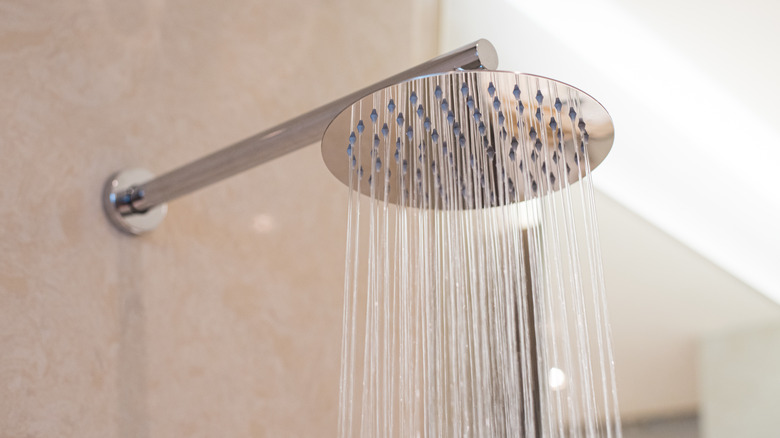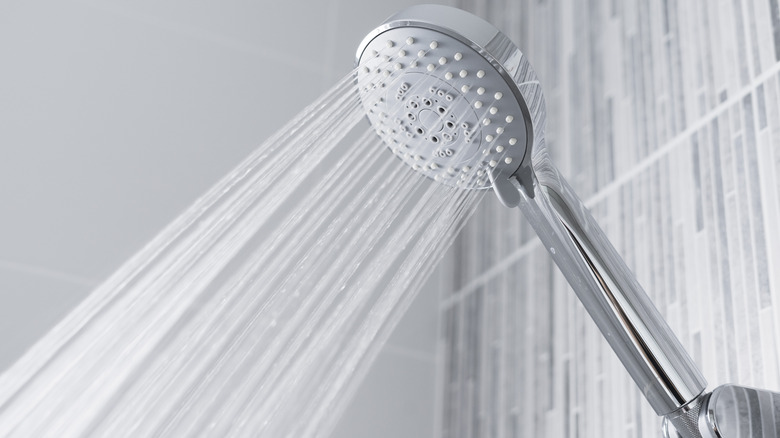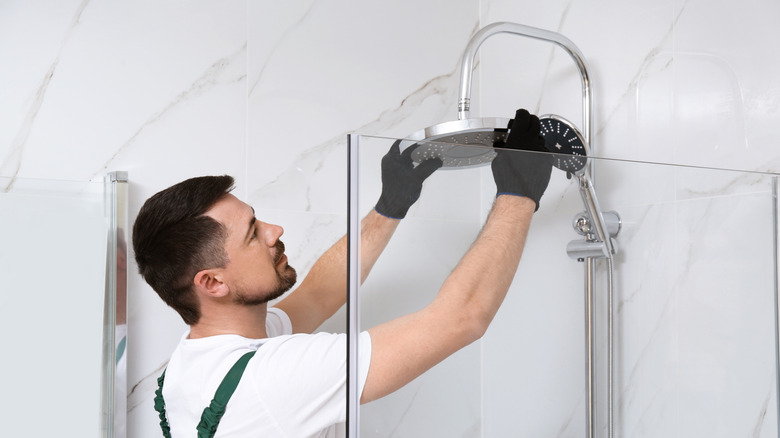A Low-Flow Showerhead Won't Slash Your Water Bills Drastically, But It Will Save You Money
Most people take at least one shower per day, which uses an average of just over 2 gallons of water each minute, or over 17 gallons for an average shower. Not only is this wasteful use of water bad for the environment, but it can also add up to a massive water bill — especially if you have a large family or frequently take long showers.
While cutting down on your shower duration can help reduce the impact, it's not an attractive or practical solution for those who cherish the time they spend bathing. Thankfully, a better solution could be as simple as switching out your showerhead. Older models weren't designed with environmental regulations in mind and tended to disperse more water than is necessary for an enjoyable shower. However, low-flow showerheads can help reduce the water flow from your shower without sacrificing quality. While making the switch won't eradicate your water bill, it can significantly decrease it at a time when utility bills are skyrocketing across the country.
Low-flow doesn't mean low pressure
Low-flow showerheads help you lower your water bill by providing a less intense water flow than older, heavier-flow models. Thankfully, this doesn't mean the stream of water is less powerful, but that it uses less water — as much as 40% less than a conventional showerhead. They typically come in two styles: a laminar-flow design, which expels individual streams of water, or an aerating design, which incorporates air into the water stream for a mistier experience. Of the two, laminar-flow technology is more energy efficient and won't make your bathroom as misty (or prone to mold) as an aerating model.
Breaking it down per shower, an older, traditional showerhead uses as much as 5.5 gallons of water per minute. Low-flow showerheads, however, only use around 2.5 gallons per minute. This roughly translates to savings of up to $50 per year, depending on how you heat your water — less if you use natural gas, more if you have an electric water heater. However, keep in mind that low-flow showerheads have improved a lot since they appeared on the market, so you're better off opting for a newer model than a discounted product from ten years ago.
How to switch showerheads
Finding a low-flow showerhead shouldn't be too hard, as they're available at most major home improvement stores like Home Depot or Lowe's. However, don't let the idea of changing out your showerhead intimidate you — the process is straightforward.
Removing your old showerhead should be as easy as turning it counterclockwise by hand, though you may need an adjustable wrench if it's really screwed on tight. Then, inspect the shower arm and its threads for rust or mineral deposits. You can use a wire brush to remove rust. Now it's time to install the new showerhead, which is as simple as screwing it clockwise by hand.
If your shower arm is loose, hold it in place with a towel and pliers using your free hand. Then, do a quick test to ensure it isn't leaking (keep some plumber's tape handy just in case), and you're all set to see savings on future water and energy bills.


